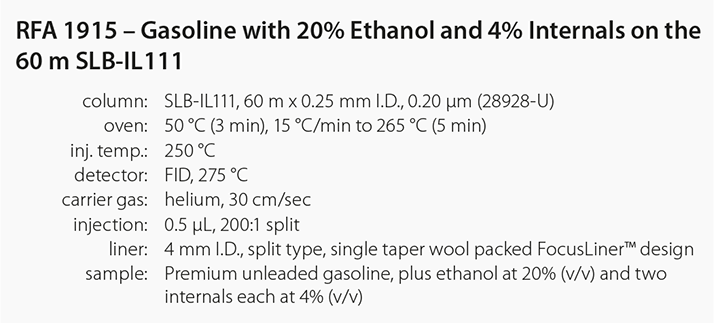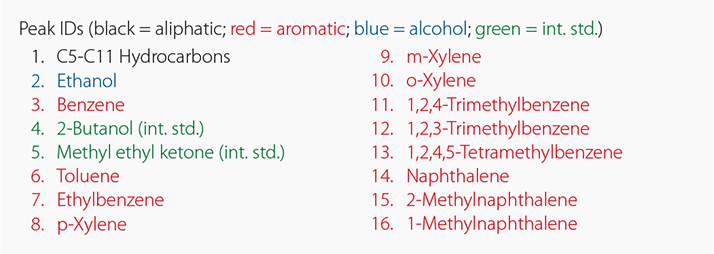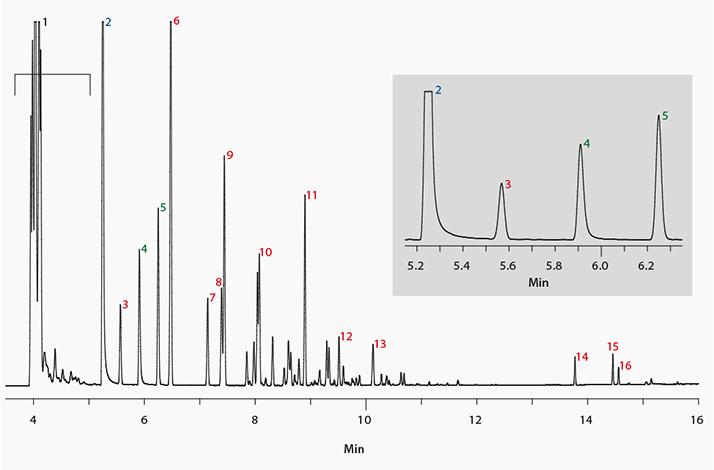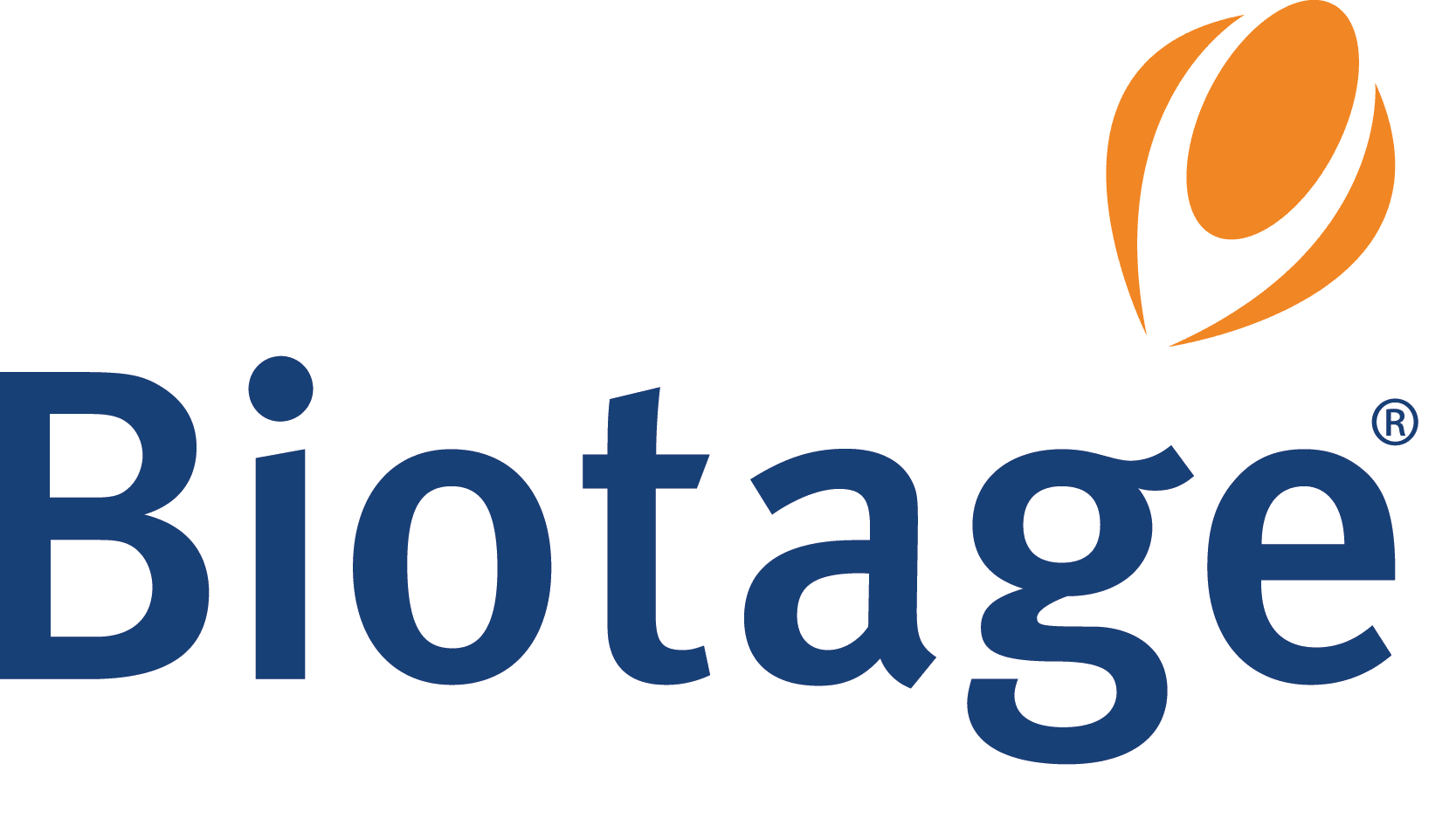
Introduction
The amount of benzene in gasoline is a concern because it is a known human carcinogen, and exposure to it has been linked to detrimental health effects. The challenge with the analysis lies in the complex composition of gasoline, which consists of hundreds of different compounds. Reformulated gasoline also contains additives to produce more complete combustion and subsequent lower emissions of harmful compounds. These additives accomplish this by boosting the oxygen content, and are commonly referred to as "oxygenates". Ethanol is a commonly used oxygenate. Therefore, to measure benzene in reformulated gasoline, it must be resolved from the C5-C12 aliphatic portion, other aromatics, ethanol and any method required internal standards. This typically requires the use of a two-column switching procedure1.

Analysis of a reformulated gasoline sample on the extremely polar SLB®-IL111 capillary column resulted in the elution of benzene after the aliphatic portion, and also resolution of benzene and ethanol. Additionally, the phase stability of the SLB-IL111 column exhibits a stable baseline when subjected to a temperature ramp. Because this column can be used up to 270 °C, it also allows the timely elution of the heavy aromatic constituents in gasoline. These observations indicate that the SLB-IL111 may be an effective alternative to the two-column switching procedure currently required for the determination of benzene and other aromatics in reformulated gasoline.



Reference:
- ASTM D3606, Benzene and Toluene in Unleaded Gasoline and Aviation Fuel.





